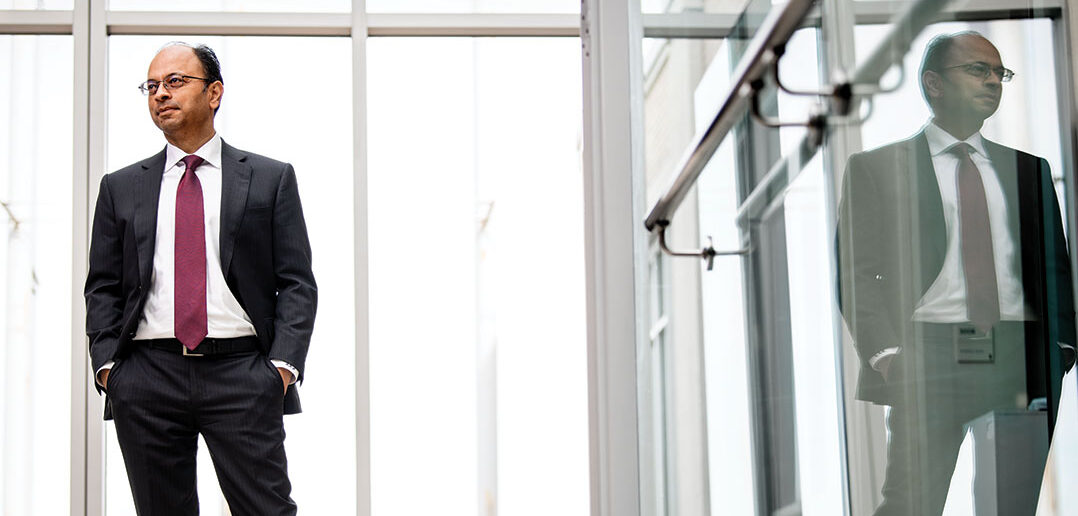You could probably have been the dean anywhere. Why did you decide to come to Brown?
I have been asked and offered opportunities at other institutions. Brown’s size, scale, and sense of community were a good fit for me. But what sealed the deal was meeting the provost and the president who advanced a bold and ambitious agenda that suits my personality. So that’s one: the leadership.
The second thing that attracted me was the very nice upward trajectory enjoyed by the Medical School over the last decade—something that is really to the credit of Dean Elias, the faculty, and the many friends of Brown that have supported the institution and the students. The Medical School has momentum, as does the University, and when there’s alignment and committed leadership, one has the opportunity to make big jumps. I could see opportunity to build an integrated biomedical ecosystem with not just the clinical partners but with the School of Public Health and the School of Engineering. It’s hard work, but if we all agree that the North Star is what is best for Brown and the Rhode Island community, then we can accomplish much more together than in isolation.
There was one day when Mukesh sat down with me while in the common room in the lab; we were both sipping coffee. He was mentioning something about trying to balance the division’s grants among the different projects ongoing at the time. So I joked, ‘With great power, comes great responsibility.’ He turned and looked at me and said ‘Exactly! Who said that?’ And of course I said, ‘Spider-Man.’ And he just silently shook his head. Now that’s a memory.
—Nelson Hsieh, MD, PhD, former Medical Scientist Training Program student at Case Western, current fellow at Massachusetts General Hospital
Can you tell me something about you that is not on your CV?³
If you look at my phone, there is one individual that dominates all the pictures and that is the dog. My kids are convinced that he is the favorite child who will inherit everything. I have hundreds of pictures … a few of my family, but hundreds of Oreo. He’s half Havanese and half poodle, 15 pounds, and very spoiled.
What have the pandemic years been like for you?
Probably no different than anyone else, just very difficult. What it did teach me is the awesome power of nature. We think we know so much. We can put people on the Moon, and we can sequence the human genome, develop therapies, all of which is amazing; however, nature can stop the world in its tracks. There were some silver linings, but not many. Both our kids spent a lot more time at home—my daughter is in medical school and my son is in college. I don’t know if it was great for them, but it was a joy for us to have them around again.college. I don’t know if it was great for them, but it was a joy for us to have them around again (4).
My dad is very passionate about anything he immerses himself in. His ability to work countless hours of the day to accomplish an end goal is something I have noticed since I was a young child. Another quality that I see in my dad is his humble personality. For someone with quite a lot of career-related accomplishments, he presents a great level of modesty to his family, friends, and colleagues.
—Kavi Jain, Bachelor of Business Administration candidate, Class of 2022, Emory University
Has the pandemic affected your outlook on medicine or on health care?
I think it underscored what many talk and write about—issues such as the inadequacy of our public health systems, and that we need more investment broadly. And of course the pandemic highlighted the disparities in health care for underserved or disadvantaged populations. The other issue that has really emerged so vividly for me is mental health—issues such as anxiety, depression, and suicide. We need a lot more work in this space, both in science and health care.
But there were amazing things that came out of it too. The world came together to combat the pandemic. Thankfully, we were able to draw upon a lot of fundamental science in RNA biology and collaborate across the public and private sectors to develop a vaccine in warp speed by drug development standards. There’s lessons to be learned there. Typically, therapeutic development takes forever, but when there’s a will, and there is an unmet medical need, we can move fast. We now need to take some of these lessons learned and apply them to other unmet needs.




